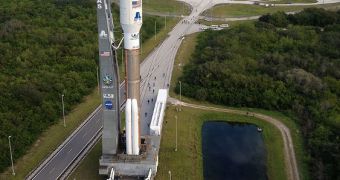The United Launch Alliance, a collaborative effort between The Boeing Company and Lockheed Martin, announces that its Atlas V delivery system has been selected for launching the next generation of weather satellites into geostationary orbit.
Officials made the announcement on Thursday, April 5. They say that the two spacecraft, GOES R and GOES S, are both part of the Geostationary Operational Environmental Satellites (GOES) program, which is operated by the National Environmental Satellite, Data, and Information Service (NESDIS).
The data collected by these spacecraft are used by the National Weather Service (NWS) for forecast and weather monitoring purposes. In addition, long-term datasets are compiled into trends, and then included in existing climate models, which are used to figure out how global warming acts.
Moreover, scientists have been using GOES data to understand the interactions between land, atmosphere, ocean, and climate since 1974, when the first spacecraft of the series made its way to orbit.
GOES R and GOES S are currently scheduled to join the rest of the constellation in October 2015 and February 2017, respectively. NASA experts decided that the Atlas V-541 configuration is the optimal choice for these satellites.
The American space agency is overseeing the launch for the US National Oceanic and Atmospheric Administration (NOAA). The latter will gain full operational control of the satellites once they are deployed. NESDIS was created within NOAA specifically to handle weather satellite data.
Atlas V has proven its worth in numerous missions. The most recent was the launch of the NASA Mars Science Laboratory spacecraft, which contains the Curiosity rover. The probe is currently approaching its destination, and will reach the Red Planet by this August, Space reports.
For the two GOES launches, the delivery system will be outfitted with four solid rocket boosters, and a single, 5-meter shroud cover at its head. The latter will provide protection for both the single-engine Centaur upper stage and the payload.
This configuration is needed because the satellites have to be placed more than 35,790 kilometers (22,240 statute miles) above the surface of the planet. NASA says that the contract it signed with ULA is worth $446 million.
This figure includes all aspects of the launch service, from the delivery systems and ground support, to telemetry relay and tracking. According to the agency, Atlas rockets have been used to launch GOES spacecraft in the past, back in the 1990s and early 2000s.

 14 DAY TRIAL //
14 DAY TRIAL //